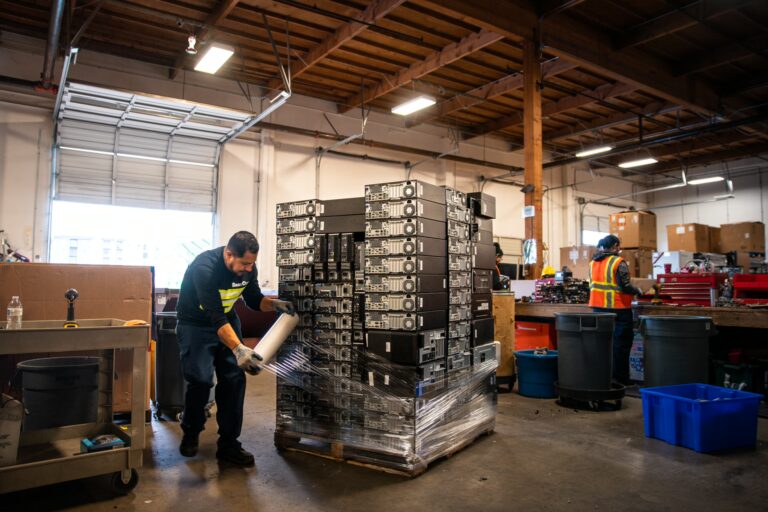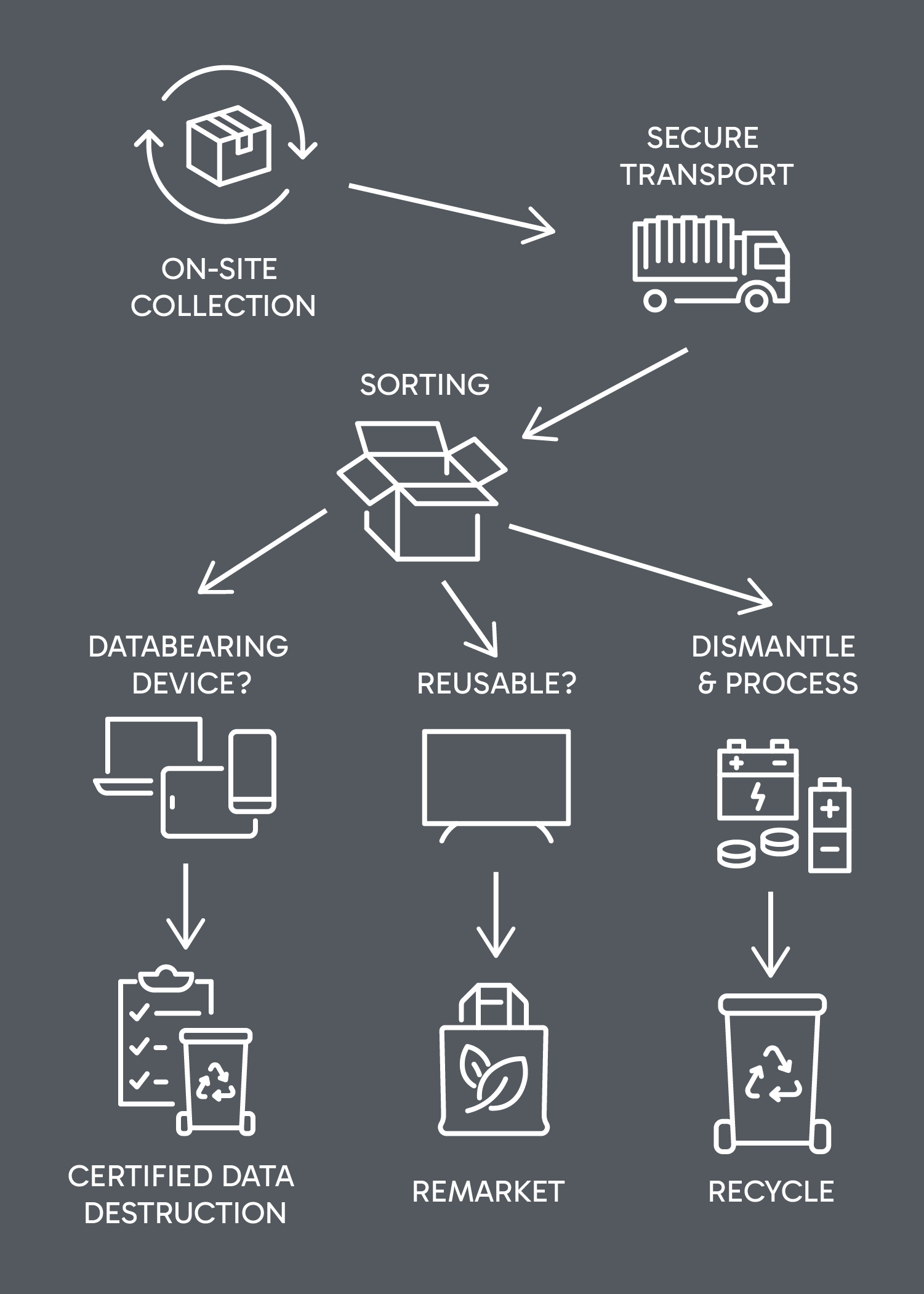Electronics Waste Recycling
Recycle Tech the Easy Way
Every year, millions of tons of electronic waste are generated, posing significant environmental challenges. At 1 Green Planet, we’re committed to providing eco-friendly, secure, and convenient recycling solutions for your outdated or unused electronics.
Zero Waste, Zero Landfill
Sustainable Solutions for Your E-Waste
E-Waste Recycling (Computer recycling and more) is the process of collecting, sorting, refurbishing, reusing or disassembling electronic devices to keep hazardous materials out of our precious landfills. Reuse is our #1 goal!
Our rule of thumb: if it’s over 70% metal and/or has a cord attached, we can recycle it!

Certified and Secure
Data Destruction Services
Secure methods of data destruction include data wiping, degaussing, conical punch and shredding. As a result, companies are able to maintain certain requirements, compliance, and legal standards. Data Destruction services are NIST 800-88, HIPAA, FACTA, NSA, and Department of Defense Compliant.
Our eWaste recycling process is Certified and we provide a secure Chain of Custody from start to finish that includes: Consultation, pick-up, transportation, processing, and certification.


Safely Retire Your IT Equipment
Secure IT Asset Disposition (ITAD) Services
When it’s time to decommission outdated IT assets, 1 Green Planet offers a comprehensive ITAD program that ensures secure data destruction, environmental responsibility, and potential value recovery. Our process includes free equipment evaluation and pickup for qualifying loads, detailed inventory tracking, and the issuance of Certificates of Data Destruction and Recycling. With our audit-ready reporting, you can confidently meet internal policies and regulatory requirements.

We Make It Simple
Three Options to Suit Your Needs
Our Process

On-site Collection
Our team will come to your location and pick up your end-of-life equipment or your recycling collection bins or totes. Our drivers and team are trained to handle your assets and data and keep them secure every step of the way.
Secure Transport
Transporting sensitive electronic recyclables requires safe and secure handling and our team of trained asset handlers have what it takes. We take care of the logistics of pick up and delivery to ensure that the ewaste or electronics arrive safely.
Sorting
Because e-waste contains many different types of materials, including plastics, glass, metals and more, there are several steps to recover the resources efficiently. Electronic items are first manually sorted. Some items are shredded to reduce them in size so that the reusable material within them is efficiently recovered. Items that should not be shredded or reduced, such as fluorescent lights, batteries, or hazardous materials.
Depending on the type of materials being recycled, there could be different outcomes: Refurbishing, Data Destruction, or Dismantle and Process
Remarket/Reuse
The data from these electronics are securely removed first, then the products are reintroduced into the marketplace, thus keeping them out of landfills as long as possible.
Data bearing devices
For computers, servers, tablets and phones – anything that carries your data – it’s crucial to properly destroy personal and confidential information, while keeping the products out of the landfill or in nefarious hands.
Secure data destruction
There are different methods and levels of destruction available, depending on your requirements as well as what is in compliance with specific industry standards. Using the National Institute of Standards and Technology method of sanitizing hard drives and electronic media removes the data completely from a readable drive. Damaged drives are shredded.
Dismantle & Process
Electronic items are reduced in size by shredding or crushing which breaks them down into fragments which can then be separated further. Magnets are used to remove steel and iron. Other methods are used to separate non-metallic materials from other metals like aluminum, brass, or copper. Plastic and glass are separated by using water. CRTs (cathode ray tubes), which contain toxins like lead, are handled in a separate process to avoid releasing these toxins into the environment or exposing them to humans and animals.
Recycle
Once properly separated and cleaned, each of these types of materials are then sold or downstreamed to other recyclers so that they can be made into new products.
Reporting
The last step after each of these methods is a complete reporting of the assets that were removed from the business, how and when they were processed, and a certificate of recycling or destruction is provided.